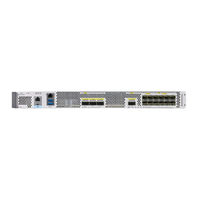Cisco Catalyst 8540 MSR Manuals
Manuals and User Guides for Cisco Catalyst 8540 MSR. We have 2 Cisco Catalyst 8540 MSR manuals available for free PDF download: Configuration Manual, Regulatory Compliance And Safety Information Manual
Cisco Catalyst 8540 MSR Configuration Manual (934 pages)
ATM Switch Router Software Configuration Guide
Brand: Cisco
|
Category: Network Router
|
Size: 11.56 MB
Table of Contents
-
-
-
Connections44
-
-
-
EXEC Mode53
-
-
-
-
-
-
Configuring SNMP109
-
-
-
-
-
-
-
-
Displaying Pvcs235
-
-
-
-
Feature Overview243
-
Benefits244
-
-
-
OAM Overview255
-
-
-
-
-
ATM Addresses318
-
-
-
-
-
-
-
-
-
-
-
Ethernet Example428
-
Ethernet Example436
-
-
-
-
-
RMON Overview456
-
SNMP Overview462
-
Configuring SNMP462
-
SNMP Examples465
-
-
-
-
Configuring OSPF471
-
RM CAC Support484
-
MPLS Overview487
-
MPLS Vpns499
-
-
-
-
-
-
-
Configuring SGCP606
-
-
-
-
-
Method One633
-
Method Two634
-
-
Configuring LMI642
-
-
-
-
-
-
-
-
Marking708
-
Queuing709
-
Scheduling710
-
Tail Drop711
-
Xred711
-
Input Policy712
-
Output Policy712
Advertisement
Cisco Catalyst 8540 MSR Regulatory Compliance And Safety Information Manual (31 pages)
Cisco Systems ATM Switch Regulatory Compliance and Safety Information
Table of Contents
Advertisement
Related Products
- Cisco 851W - Integrated Services Router
- Cisco 857W - Integrated Services Router
- Cisco 850 Series
- Cisco Unified Communications Manager 8.5(1)
- Cisco 857
- Cisco 857-K9 - 857 Integrated Services Router
- Cisco 851-K9 - 851 Integrated Services Router
- Cisco 857W-G-A-K9 - 857W Integrated Services Router
- Cisco Catalyst 8510 MSR
- Cisco 860VAE-W-E-K9

